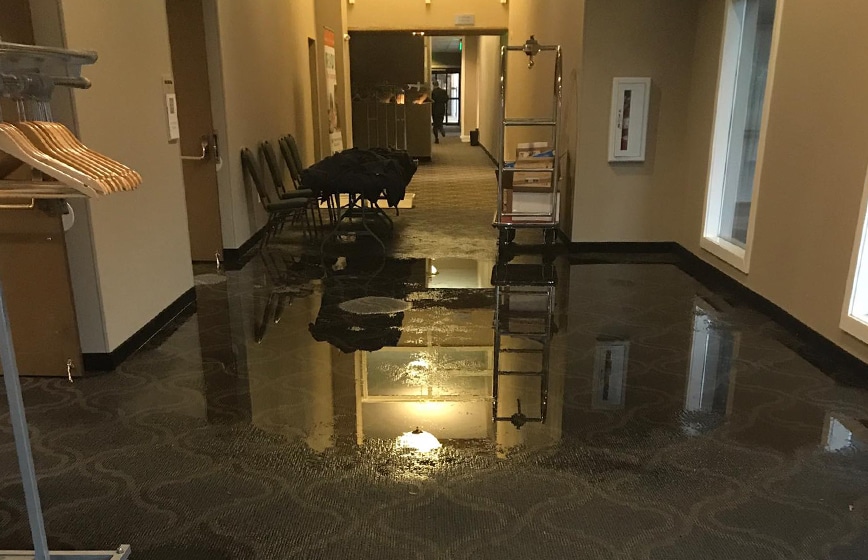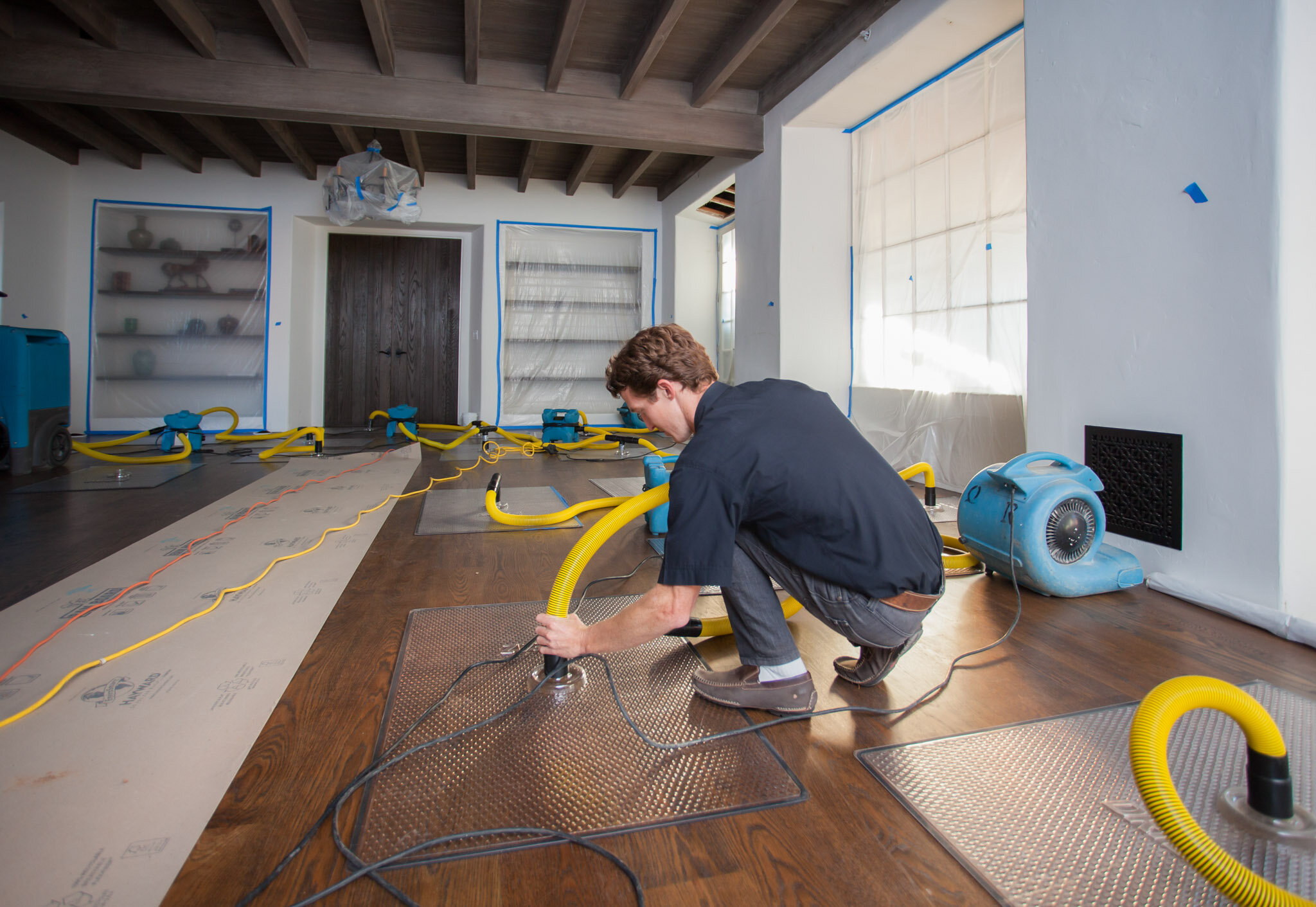Common mistakes to avoid when hiring Flood Cleanup Services
Wiki Article
Water Damage Restoration 101: Understanding the Process and Expense
Water damage can strike suddenly, leaving property owners in a state of complication. Recognizing the remediation procedure is important for effective recovery. From examining the damage to selecting the ideal company, each step influences the overall result and price. Factors such as the type of water damage and urgency also play a significant duty. What are the specific methods made use of in repair, and exactly how can one get ready for possible expenses?Types of Water Damage

Preliminary Evaluation and Inspection

Water Extraction Techniques
Following the preliminary analysis, efficient water removal methods are utilized to mitigate damage and prevent more concerns. These methods entail using specialized devices such as completely submersible pumps and industrial-grade vacuums - Water Damage Restoration. The choice of method depends on the volume of water present and the sort of materials impacted. For standing water, completely submersible pumps are typically made use of for quick elimination, while vacuum cleaners are ideal for removing water from carpetings and upholstery. In addition, progressed techniques like water removal mats may be used for hard-to-reach locations - Flood Cleanup Services. The goal is to get rid of as much water as possible, lessening the potential for mold and mildew growth and architectural damage. Motivate and efficient water extraction is important in the total water damage reconstruction procedureDrying Out and Dehumidification Process
Once the water removal is total, the drying out and dehumidification procedure becomes important to restoring the afflicted location. This phase normally utilizes industrial-grade dehumidifiers and air movers to successfully reduce moisture levels. The dehumidifiers reel in damp air, removing excess humidity, while air movers circulate air to increase evaporation. Surveillance equipment is often used to track humidity and temperature level degrees, ensuring optimal drying problems. The period of this process can vary depending on the level of the water damage and ecological factors. It is important to thoroughly completely dry all affected products, consisting of wall surfaces, floor covering, and furnishings, to stop mold development and architectural damage. Correct execution of this step is crucial for an effective reconstruction outcome.Cleaning Up and Disinfecting Damaged Areas
A detailed preliminary evaluation and assessment of affected areas is crucial to identify contamination degrees as soon as the drying out process is total. Water Damage Restoration. Effective cleansing techniques and suitable products must then be employed to remove debris and discolorations. Finally, sanitization and disinfection techniques are vital to guarantee that unsafe pathogens are gotten rid of, recovering the space to a safe problemFirst Assessment and Examination
Before starting any repair initiatives, a thorough preliminary analysis and evaluation of the impacted locations are crucial for effective cleaning and disinfecting. This process involves identifying the level of water damage, determining the source of the water invasion, and assessing the products influenced. Examiners normally look for signs of mold development, structural stability problems, and harmed possessions. The assessment also consists of examining dampness levels utilizing customized tools to guarantee no surprise water pockets continue to be, as these can bring about further problems. Recording the searchings for is crucial for intending the following steps in the remediation process. A detailed initial evaluation makes it possible for repair specialists to create a targeted method for efficient cleaning and sterilizing, eventually lessening damage and wellness threats.Cleansing Methods and Products
Effective cleansing and disinfecting of water-damaged areas need a range of strategies and items tailored to the details products influenced. For porous surface areas like drywall and carpets, extraction approaches are necessary to remove excess moisture, complied with by deep cleaning with specialized cleaning agents. Non-porous products such as ceramic tile or metal can be cleaned up using commercial-grade cleansers that efficiently get rid of pollutants. Steam cleansing is another effective strategy, especially for rugs and upholstery, as it makes use of heats to get rid of germs and mold and mildew (Flood Cleanup Services). In addition, green items are progressively popular for their safety and effectiveness - Water Damage Restoration. Inevitably, picking the ideal cleansing methods and products not just guarantees instant tidiness however additionally aids in stopping additional damage and health risks connected with water invasionSanitization and Disinfection Approaches
When resolving water damage, proper sanitization and sanitation methods are necessary to ensure the safety and security and health of the affected atmosphere. After first cleansing, surface areas must be treated with appropriate disinfectants to get rid of virus, mold and mildew, and germs that flourish in moist conditions. Usual techniques consist of using EPA-approved chemical disinfectants, which can be applied through splashing or wiping strategies. Furthermore, ultraviolet (UV) light systems can properly sanitize locations by counteracting bacteria without severe chemicals. The option of technique frequently relies on the kind of materials affected and the level of contamination. Eventually, detailed sanitization not just recovers a risk-free home however likewise assists prevent future health and wellness dangers linked with lingering moisture and mold and mildew development.
Fixings and Restoration Options
Evaluating the damage caused by water direct exposure is important for determining the ideal repair services and reconstruction choices. House owners might deal with numerous concerns, including harmed drywall, distorted floor covering, and jeopardized structural elements. Relying on the extent of the damage, repairs may entail replacing areas of drywall, setting up brand-new flooring, or enhancing architectural beams. In instances of severe damage, full replacement of affected products could be necessary. Additionally, specialist restorers usually recommend using dampness meters to additional reading evaluate hidden dampness degrees before picking the very best strategy. It is essential to act quickly to stop mold and mildew growth and more deterioration. Picking the best alternatives not only recovers the residential property yet likewise assures long-term security and functionality.Elements Influencing Restoration Costs

The extent of water damage directly affects the repair costs property owners can expect to incur. Aspects such as the resource of the water, the period of exposure, and the damaged products significantly affect prices. For example, clean water damage from a busted pipe is usually less expensive to recover compared to damage brought on by sewer. Additionally, the degree of contamination determines the requirement for specialized cleansing and disposal services, better raising expenses. Geographical area additionally contributes, as regional labor prices and schedule of repair solutions can vary. The seriousness of the reaction affects costs; quicker interventions generally lead to reduce general expenditures by avoiding further damage. Recognizing these aspects is crucial for property owners when approximating reconstruction prices.
The 3 primary types of water damage are categorized based on contamination degrees: clean water, grey water, and black water. A complete preliminary analysis and examination are important actions in the water damage reconstruction process. For standing water, submersible pumps are normally utilized for quick removal, while vacuum cleaners are suitable for removing water from carpetings and upholstery. The extent of water damage straight influences the restoration costs home owners can anticipate to incur. Tidy water damage from a busted pipeline is typically much less pricey to restore compared to damage triggered by sewer.
Report this wiki page